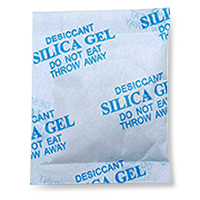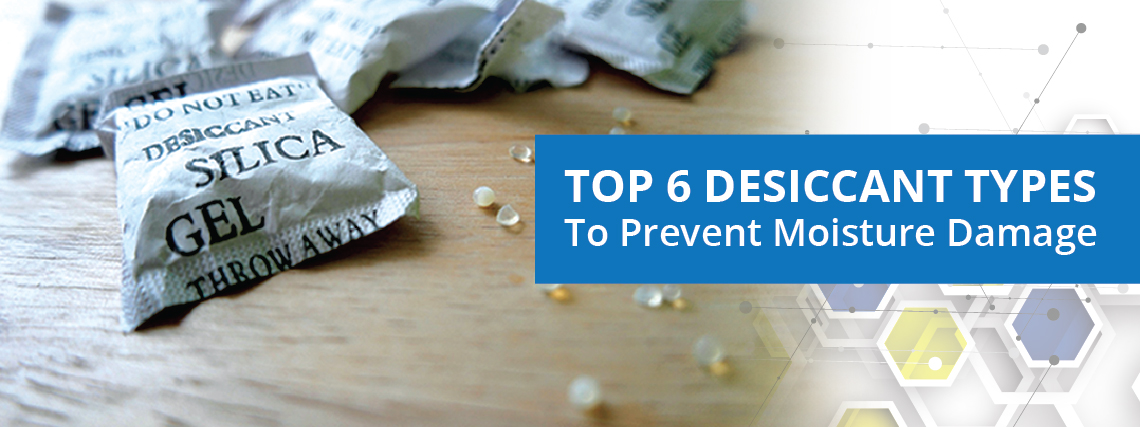Top 6 Desiccant Types to Prevent Moisture Damage

Moisture Control is extremely important when manufacturing electrical components and conducting scientific research on biological and chemical samples. Failure to maintain low Relative Humidity (RH) inside a desiccator chamber can damage or destroy components and samples. Desiccators are airtight enclosures to prevent moisture from entering the chamber, but what happens to the moisture inside the box? Below are 6 standard desiccant’s that can be used with a desiccator cabinet to prevent moisture damage.
Silica Gel – Silicon Dioxide (SiO2) pulls moisture at temperatures up to 220°F (105°C). Once the temperature goes up more than 100°F, the silica gel will work at the lower absorbing rate. Commonly found in the food and pharmaceutical industries. Silica Gel is the only desiccant type which is FDA approved for use with direct contact with food and pharmacy items. Silica Gel can be purchased in granular or beaded form.
Indicating Silica Gel – A form of silica gel that has been washed with a concentration of cobalt chloride producing a deep blue colored material. The cobalt chloride will change from blue to pink once the gel becomes saturated with moisture. The color change indicates it is time to replace the desiccant.
Molecular Sieves – Also known as Synthetic Zeolite, much stronger moisture adsorb when compared to gel or clay. Zeolites are minute crystalline solids that have a distinct structure. Generally comprised of oxygen, silicon, and aluminum in their scaffold, and water, cations, and other molecules in their pores. Molecular Sieve can hold moisture under 450°F. Molecular Sieve is not FDA approved for food or pharmacy use.
Calcium Oxide and Calcium Sulfate – Also known as Drierite, are made of lime and gypsum a crystal based with Calcium which is more stable chemically, non-toxic and non-corrosive. Moisture adsorptive capacity is less than 28.5% by weight. Most effective where a low critical Relative Humidity (RH) is necessary, and where there is a high concentration of water vapor present. Calcium Oxide is typically sold in package form.
Montmorillonite Clay – Commonly known as bentonite is a naturally occurring adsorbent created by the controlled drying of magnesium aluminum silicate of the sub-bentonite type. Clay desiccant works best below 120°F; anything above 120°F the clay may give off moisture. Montmorillonite clay is the least expensive desiccant per pound when compared with the others and is widely used in medicine and pharmacology.
Nitrogen (N2) – Unlike the other desiccant types, Nitrogen is a gas. An advantage of Nitrogen is when used within a nitrogen-base dry cabinet, Relative Humidity (RH) can quickly be lowered inside the chamber. Generally used in semiconductor research and manufacturing industries to precisely control RH during storage. A meter can help monitor and adjusted to maintain the desired set-point. Nitrogen can be purchased in tanks or a nitrogen generator can be used to generate nitrogen inside the lab.
To learn more about nitrogen generators, visit Cleatech’s website. Click here for desiccator chamber options for moisture-free storage

